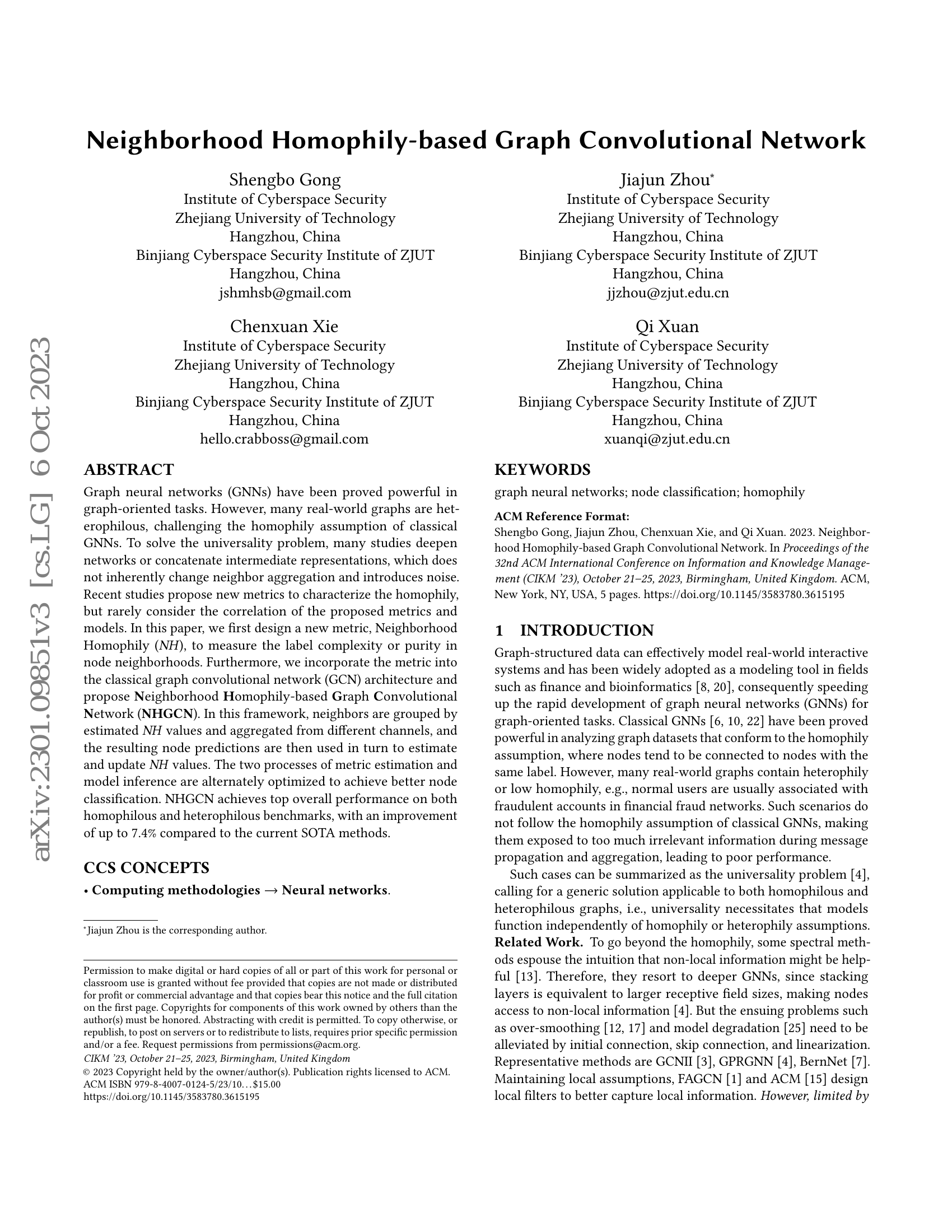Neighborhood Homophily-Guided Graph Convolutional Network

Graph neural networks (GNNs) have been proved powerful ingraph-oriented tasks. However, many real-world graphs are heterophilous, challenging the homophily assumption of classicalGNNs. To solve the universality problem, many studies deepennetworks or concatenate intermediate representations, which doesnot inherently change neighbor aggregation and introduces noise.Recent studies propose new metrics to characterize the homophily,but rarely consider the correlation of the proposed metrics andmodels. In this paper, we first design a new metric, NeighborhoodHomophily (NH), to measure the label complexity or purity innode neighborhoods. Furthermore, we incorporate the metric intothe classical graph convolutional network (GCN) architecture andpropose Neighborhood Homophily-based Graph ConvolutionalNetwork (NHGCN). In this framework, neighbors are grouped byestimated NH values and aggregated from different channels, andthe resulting node predictions are then used in turn to estimateand update NH values. The two processes of metric estimation andmodel inference are alternately optimized to achieve better nodeclassification. NHGCN achieves top overall performance on bothhomophilous and heterophilous benchmarks, with an improvementof up to 7.4% compared to the current SOTA methods